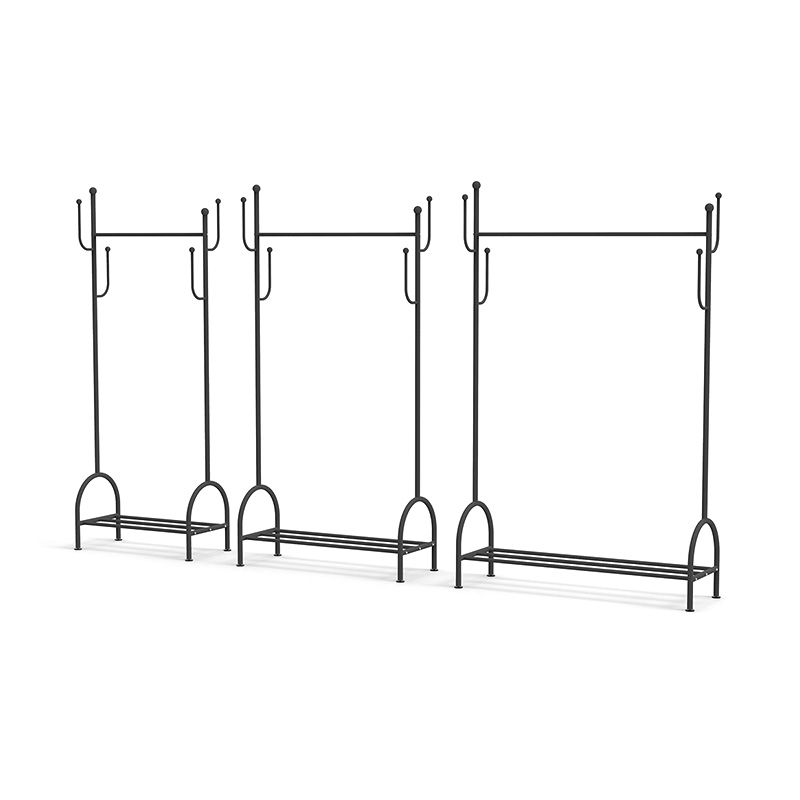Metal hangers are a staple in both homes and retail stores due to their durability, sleek appearance, and ability to hold a variety of garments. However, not all metal hangers are created equal. Some bend or warp easily under the weight of heavy clothes, losing their shape and functionality over time. If you're looking for a metal hanger that stands the test of time, resists deformation, and supports your wardrobe reliably, here are several key factors to consider.
1. Material Composition Matters
The first and most important aspect of a strong, nondeforming metal hanger is its material. Common materials include:
Stainless Steel: Known for its resistance to rust and corrosion, stainless steel is a top choice. It maintains its shape well under pressure and offers longlasting strength.
Carbon Steel: Often used with a chromeplated finish, carbon steel hangers are stronger than aluminum and usually more affordable than stainless steel. They offer excellent structural integrity.
Aluminum: Lightweight and rustresistant, but aluminum hangers can bend more easily under heavy clothing like winter coats or suits.
Tip: For optimal durability and weight support, choose hangers made from highgrade stainless steel or thick carbon steel.
2. Gauge or Thickness of the Wire
The gauge refers to the thickness of the metal wire used in the hanger. A lower gauge number means thicker wire, which translates to more strength.
16gauge to 12gauge metal hangers are considered heavyduty and are less likely to deform.
18gauge or thinner hangers may work for lighter garments, but they’re more prone to bending over time.
Tip: If you're hanging heavy clothing such as coats, jackets, or suits, opt for a hanger with a thicker, lowergauge wire.
3. Construction Quality
Even the best material won’t help if the hanger is poorly constructed. Pay attention to the following construction features:
Seamless Joints: Welded or onepiece designs are generally stronger than hangers with separate parts that are glued or clipped together.
Smooth Edges: Rough or unfinished edges can snag clothes and indicate poor craftsmanship.
Reinforced Structure: Some metal hangers have a triangular reinforcement or double rod design to improve loadbearing capacity.
Tip: Always check the welding points and overall finish of the hanger. A highquality build ensures longterm stability.
4. Protective Coatings and Surface Treatments
A metal hanger that resists corrosion and abrasion will maintain its shape and strength much longer. Look for:
Chrome Plating: Adds shine and prevents rusting, though it may chip if poorly applied.
Powder Coating: Adds a layer of protection and prevents scratches. Often used for colored hangers.
Plastic or Rubber Coating: Not only protects the metal but also prevents clothes from slipping.
Tip: Choose a hanger with a protective finish that suits your climate (e.g., antirust coating in humid areas).
5. Shape and Design Features
A hanger’s shape can impact how much weight it can bear without bending. Consider:
Curved Shoulders: These distribute weight more evenly, reducing pressure on specific points.
Flat Designs: More spacesaving, but may deform faster under weight.
Wider Widths: Better for maintaining shape under heavy loads.
Tip: If you’re hanging structured garments like suits or coats, go for wide, curved designs that maintain the garment’s shape and resist hanger deformation.
6. Purpose and Use Case
Different garments place different stress levels on hangers. Match the hanger to the task:
Light Garments: Shirts, blouses, or tshirts can use thinner metal hangers.
Heavy Garments: Coats, suits, or denim need strong, thick, and welldesigned metal hangers.
Special Garments: Hangers with clips or notches can support skirts or dresses without compromising stability.
Tip: Consider purchasing a few different types of heavyduty metal hangers for your heavier clothes, while using lighter ones for shirts and blouses.
7. Brand Reputation and Reviews
Sometimes, product specifications alone don’t give the full picture. That’s why it helps to:
Check Online Reviews: See what other customers say about deformation, rust, and strength.
Look for Trusted Brands: Known brands often invest in better materials and quality control.
Ask for Recommendations: Whether from friends, professionals, or store staff, reallife usage insights are invaluable.
Tip: A higher price point doesn’t always mean better quality—but a hanger that lasts years is usually worth a slightly higher investment.
Choosing a metal hanger that won’t easily deform involves more than picking the first shiny option you see. Focus on material quality, wire thickness, protective coatings, and design suited to your clothing needs. A wellmade hanger not only supports your clothes but also helps them maintain their shape—protecting your wardrobe investment.



 English
English Español
Español



